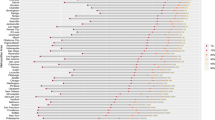Abstract
A brief transit strike in early December 1976 disrupted bus services to the city of Pittsburgh and surrounding Allegheny County. That strike provided an opportunity for testing a variety of approaches to increase ride-sharing and to reduce traffic congestion, and for examining the effect of the strike on traffic congestion and on individual travel behavior. Even though over 60% of the commuters to the CBD use transit, the effects of the strike were relatively mild. There was some increase in traffic flow into the CBD and some spreading of the peak period. The largest proportion of the transit commuters who made trips to the CBD during the strike were dropped off by a non-commuter, increasing highway traffic. The most severe impact was felt by those transit commuters who had no cars in the household; 25% of these commuters (only 3% of the total CBD commuters) stayed home from work on the first day of the strike. Most attempts to mitigate the impact of the strike had little effect, largely because most commuters were able to manage adequately during the short strike. The anticipated parking problem, on which much of the contingency planning was focused, did not emerge, largely because of the use of carpooling and “drop-off” mode by many of the transit users.
Similar content being viewed by others
References
Allegheny County, Department of Planning and Development (1976). “Pittsburgh CBD Cordon Study,” September 1976.
Bata, A. F. (1974). “The Effects of the 1972 Trenton, New Jersey, Bus Strike on the Modal Choice of the Commuters,” MA Thesis, Northwestern University, Evanston, Urban Mass Transportation Administration.
Urban Systems Institute of Carnegie-Mellon University (1975). “An Evaluation of the Carpool-Public Transit Program,” Report to the Southwestern Pennsylvania Regional Planning Commission.
Voorhees, A. M. and Associates, Inc. (1974). “Guidelines to Reduce Energy Consumption Through Transportation Actions.”
Wegmann, F. J. et al. (1979). “Impact of the 1977 Transit Strike in Knoxville,” TRB Research Record No. 719, Transit Development.
Wendell, R. E. et al. (1973). “Emission Prediction and Control Strategy: Evaluation of Pollution from Transportation Systems,” APCA Journal, Vol. 23, No. 2.
Author information
Authors and Affiliations
Rights and permissions
About this article
Cite this article
Blumstein, A., Miller, H.D. Making do: The effects of a mass transit strike on travel behavior. Transportation 11, 361–382 (1983). https://doi.org/10.1007/BF00150724
Issue Date:
DOI: https://doi.org/10.1007/BF00150724




